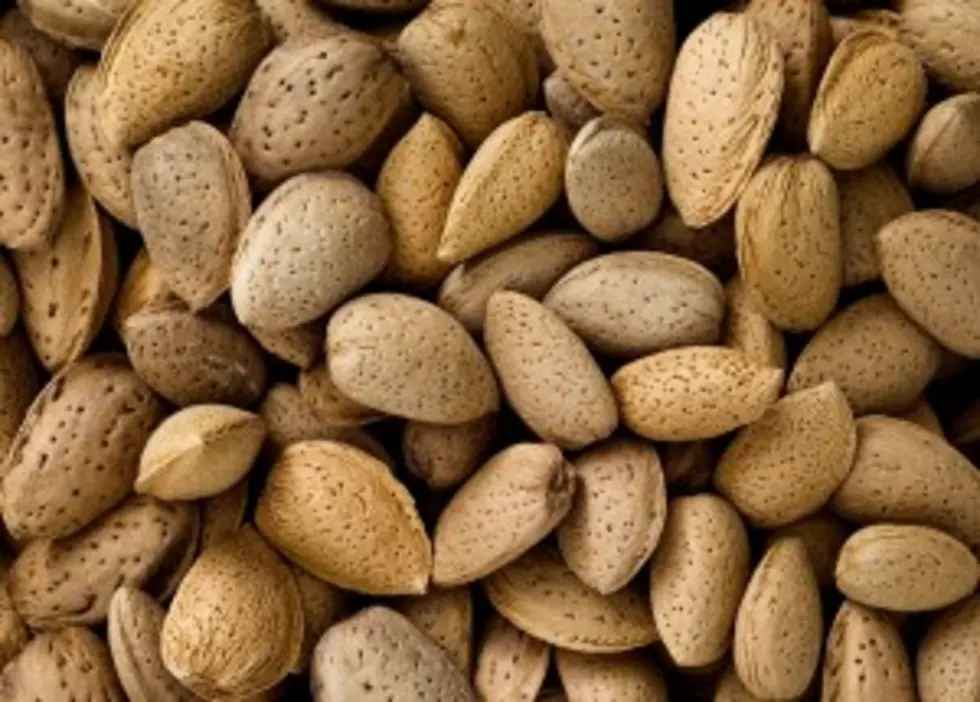
Is the Almond Milk You’re Drinking as Good for Your as Your Think?
There are many reasons why mass-produced dairy milk has found itself replaced in many households by almond milk. However, is the almond milk you're buying as good for you as perceived? With people that are lactose intolerant, or if you're just wanting to avoid milk produced by steroid and drug pumped cows, almond milk has always seemed like a great alternative. But according to an article by Alt Health Works, that commercially produced almond milk in your fridge, may contain a lot less almonds than you think.
According to a spokesperson for the Almond Board of California, the amount of almonds in every half gallon of milk is similar to the as that of milk produced in the United Kingdom. Well, what does that mean for us here in the United States? Well, in a recent study in the UK, it was discover that every half gallon of commercially produced almond milk had less than a handful of almonds in it. That translates to only 2% of your almond milk is actually almonds.
So what is the rest of your milk made of? Essentially, it consists of water and sweeteners like honey, sugar, agave or maple syrup. You may be thinking that, "it's only some of the producers that are cutting corners when it comes to the amount of almonds they use." However you would be wrong. According to some news outlets, this recipe of using less almonds is actually the industry standard.
What does this mean for you? Well with many people buying almond milk for it's nutritional benefits, take this into consideration. The standard serving of almonds contains about 160 calories, while a cup of commercial almond milk has only 30. When it comes to protein and healthy fats, a serving of almonds has 6 grams of protein and 14 grams of healthy fats. The cup of milk only has 1 gram of protein and 2.5 grams of healthy fats.
So what you can do? If you are totally against drinking dairy milk, you can look at special brands as healthier stores like Sprout and Whole Foods. You can also take the steps to make your own almond milk. Surprisingly, the recipe is rather simple, and I'm looking forward to giving it a shot.
How to Make Almond Milk at Home (Makes about 2 cups)
Ingredients
1 cup raw almonds, preferably organic, 2 cups water, plus more for soaking,Sweeteners like honey, sugar, agave syrup, or maple syrup, to taste,optional
Equipment
Bowls, Strainer, Measuring cup, Blender or food processor, Fine-mesh nut bag or cheese cloth
Instructions
- Soak the almonds overnight or up to 2 days. Place the almonds in a bowl and cover with about an inch of water. They will plump as they absorb water. Let stand, uncovered, overnight or up to 2 days. The longer the almonds soak, the creamier the almond milk.
- Drain and rinse the almonds. Drain the almonds from their soaking water and rinse them thoroughly under cool running water. At this point, the almonds should feel a little squishy if you pinch them.
- Combine the almonds and water in a blender. Place the almonds in the blender and cover with 2 cups of water.
- Blend at the highest speed for 2 minutes. Pulse the blender a few times to break up the almonds, then blend continuously for two minutes. The almonds should be broken down into a very fine meal and the water should be white and opaque. (If using a food processor, process for 4 minutes total, pausing to scrape down the sides halfway through.)
- Strain the almonds. Line the strainer with either the opened nut bag or cheese cloth, and place over a measuring cup. Pour the almond mixture into the strainer.
- Press all the almond milk from the almond meal. Gather the nut bag or cheese cloth around the almond meal and twist close. Squeeze and press with clean hands to extract as much almond milk as possible. You should get about 2 cups. (See Recipe Note for what to do with the leftover almond meal.)
- Sweeten to taste. Taste the almond milk, and if a sweeter drink is desired, add sweetener to taste.
- Refrigerate almond milk. Store the almond milk in sealed containers in the fridge for up to two days.
More From K99





